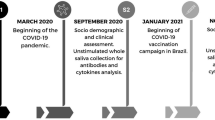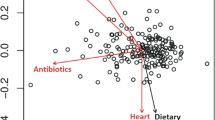Abstract
Purpose
This study investigates the social determinants of health by examining how mucosal immunity is associated with the patterning of social connections in a network. Studies have suggested that social networks have biological underpinnings, but investigations at the scale of networks, rather than individuals, have remained elusive. We integrate salivary bioscience methods with advanced social network modeling to explore the association between salivary secretory immunoglobulin A (SIgA), a key component of mucosal immunity, and social network structure.
Method
Friendship network data and saliva samples (later assayed for SIgA) were obtained from a large mixed-gender social organization (n = 155, 55% female, M age = 19.5 years).
Results
Exponential random graph modeling revealed that SIgA levels were positively associated with reporting more friendship ties with community members (i.e., social network activity), after controlling for other processes associated with network structure including preference to befriend others of the same age, gender, and extraversion, increased network popularity of agreeable individuals and those with lower levels of perceived stress, as well as network structural and organizational processes.
Conclusion
By examining a wider range of associations between SIgA and network structure, we pinpoint that SIgA is positively associated with respondent’s sociability. Our findings are consistent with social integration theories linking social relationships to health and highlight the role of humoral immunity as a possible mediator of these associations.

Similar content being viewed by others
References
Berkman LF, Glass T, Brissette I, Seeman TE. From social integration to health: Durkheim in the new millennium. Soc Sci Med. 2000;51:843–57. https://doi.org/10.1016/S0277-9536(00)00065-4.
Cohen S. Social relationships and health. Am Psychol. 2004;59:676–84. https://doi.org/10.1037/0003-066X.59.8.676.
Holt-Lunstad J, Smith TB, Layton JB. Social relationships and mortality risk: a meta-analytic review. PLoS Med. 2010;7:e1000316. https://doi.org/10.1371/journal.pmed.1000316.
Kiecolt-Glaser JK. Stress, personal relationships, and immune function: health implications. Brain Behav Immun. 1999;13:61–72. https://doi.org/10.1006/brbi.1999.0552.
Segerstrom SC, Miller GE. Psychological stress and the human immune system: a meta-analytic study of 30 years of inquiry. Psychol Bull. 2004;130:601–30. https://doi.org/10.1037/0033-2909.130.4.601.
Uchino BN. Social support and health: a review of physiological processes potentially underlying links to disease outcomes. J Behav Med. 2006;29:377–87. https://doi.org/10.1007/s10865-006-9056-5.
Cohen S, Doyle WJ, Skoner DP, Rabin BS, Gwaltney JM. Social ties and susceptibility to the common cold. JAMA. 1997;277:1940–4.
Pressman SD, Cohen S, Miller GE, Barkin A, Rabin BS, Treanor JJ. Loneliness, social network size, and immune response to influenza vaccination in college freshmen. Health Psychol. 2005;24:297–306. https://doi.org/10.1037/0278-6133.24.3.297.
Mazanec MB, Nedrud JG, Katezel CS, Lamm ME. A three-tiered view of the role of IgA in mucosal defense. Immunol Today. 1993;14:430–5. https://doi.org/10.1016/0167-5699(93)90245-G.
Jemmott JB III, Magloire K. Academic stress, social support, and secretory immunoglobulin A. J Pers Soc Psychol. 1988;55:803–10. https://doi.org/10.1037/0022-3514.55.5.803.
Cacioppo S, Capitanio JP, Cacioppo JT. Toward a neurology of loneliness. Psychol Bull. 2014;140:1464–504. https://doi.org/10.1037/a0037618.
Haas SA, Schaefer DR, Kornienko O. Health and the structure of adolescent social networks. J Health Soc Behav. 2010;51:424–39. https://doi.org/10.1177/0022146510386791.
Brent LJN, Semple S, Dubuc C, Heistermann M, MacLarnon A. Social capital and physiological stress levels in free-ranging adult female rhesus macaques. Physiol Behav. 2011;102:76–83. https://doi.org/10.1016/j.physbeh.2010.09.022.
Kornienko O, Schaefer DR, Weren S, Hill G, Granger DA. Cortisol and testosterone associations with social network dynamics. Horm Behav. 2016;80:92–102. https://doi.org/10.1016/j.yhbeh.2016.01013.
Ponzi D, Muehlenbein MP, Sgoifo A, Geary DC, Flinn MV. Day-to-day variation of salivary cortisol and dehydroepiandrosterone (DHEA) in children from a rural dominican community. Adaptive Human Behav Physiol. 2015;1:4–16. https://doi.org/10.1007/s40750-014-0002-4.
Kim DA, Benjamin EJ, Fowler JH, Christakis NA. Social connectedness in associated with fibrinogen level in a human social network. Proc R Soc Biol Sci. 2016;283:20160958. https://doi.org/10.1098/rspb.2016.0958.
Rao CV. Immunology. Harrow: Alpha Science International; 2005.
Engeland CG, Hugo FN, Hilgert JB, Nascimento GG, Junges R, Lim HJ, …, Bosch JA. Psychological distress and salivary secretory immunity. Brain Behav Immun. 2016;52:11–17. https://doi.org/10.1016/j.bbi.2015.08.017
Valdimarsdottir HB, Stone AA. Psychosocial factors and secretory immunoglobulin A. Crit Rev Oral Biol Med. 1997;8:461–74.
Stone AA, Cox DS, Valdimarsdottir H, Janddorf L, Neale JN. Evidence that secretory IgA antibody is associated with daily mood. J Pers Soc Psychol. 1987;52:988–93. https://doi.org/10.1037/0022-3514.52.5.988.
Tsuboi H, Hamer M, Tanaka G, Takagi K, Kinae N, Steptoe A. Responses of ultra-weak chemiluminescence and secretory IgA in saliva to the induction of angry and depressive moods. Brain Behav Immun. 2008;22:209–14. https://doi.org/10.1016/j.bbi.2007.07.006.
Green RG, Green ML. Relaxation increases salivary immunoglobulin A. Psychol Rep. 1987;61:623–9. https://doi.org/10.2466/pr0.1987.61.2.623.
Jemmott JB III, Borysenko JZ, Borysenko M, McClelland DC, Chapman R, Meyer D, et al. Academic stress, power motivation, and decrease in secretion rate of salivary secretory immunoglobulin A. Lancet. 1983;5:1400–2.
Ohira H. Social support and salivary secretory immunoglobulin A response in women to stress of making a public speech. Percept Mot Skills. 2004;98:1241–50.
Cohen, S., Gottlieb, B. H., Underwood, L. G. (2000). Social relationships and health. In S. Cohen, L.G. Underwood, and B. H. Gottlieb (Eds.). Social support measurement and intervention: a guide for health and social scientists (pp. 3–25). New York: Oxford University Press.
Janicki-Deverts D, Cohen S. Social ties and resilience. In: Southwick SM, Litz BT, Charney D, Friedman MJ, editors. Resilience and mental health: challenges across the lifespan. Cambridge: Cambridge University Press; 2011. p. 76–89.
Hamrick N, Cohen S, Rodriguez MS. Being popular can be healthy or unhealthy: stress, social network diversity, and incidence of upper respiratory infection. Health Psychol. 2002;21:294–8. https://doi.org/10.1037/0278-6133.21.3.294.
Cohen S. Psychosocial models of the role of social support in the etiology of physical disease. Health Psychol. 1988;7:269–97. https://doi.org/10.1037/0278-6133.7.3.269.
Berkman LF, Krishna A. Social network epidemiology. In: Berkamn LF, Kawachi I, Glymour MM, editors. Social epidemiology. 2nd ed. Cambridge: Oxford University Press; 2013. p. 234–90.
Segerstrom SC. Social networks and immunosuppression during stress: relationship conflict or energy conservation? Brain Behav Immun. 2008;22:279–84. https://doi.org/10.1016/j.bbi.2007.10.011.
Miller GE, Cole SW. Social relationships and the progression of human immunodeficiency virus infection: a review of evidence and possible underlying mechanisms. Ann Behav Med. 2004;20:181–9. https://doi.org/10.1007/BF02884959.
Marsden PV. Network data and measurement. Annu Rev Sociol. 1990;16:435–63. Stable URL: http://links.jstor.org/sici?sici=0360-0572%281990%2916%3C435%3ANDAM%3E2.0.CO%3B2-3
Rivera MT, Soderstrom SB, Uzzi B. Dynamics of dyads in social networks: assortative, relational, and proximity mechanisms. Annu Rev Sociol. 2010;36:91–115. https://doi.org/10.1146/annurev.soc.34.040507.134743.
Helgeson VS. Relation of agency and communion to well-being: evidence and potential explanations. Psychol Bull. 1994;116:412–28.
Domingue BW, Belsky DW, Fletcher JM, Conley D, Boardman JD, Harris KM. The social genome of friends and schoolmates in the National Longitudinal Study of Adolescent to Adult Health. Proc Natl Acad Sci. 2018;115:702–7. https://doi.org/10.1073/pnas.1711803115.
McPherson M, Smith-Lovin L, Cook JM. Birds of a feather: homophily in social networks. Annu Rev Sociol. 2001;27:415–44.
Segerstrom SC. Personality and the immune system: models, methods, and mechanisms. Ann Behav Med. 2000;22:180–90.
Mouw T, Entwisle B. Residential segregation and interracial friendship in schools. Am J Sociol. 2006;112:394–441. https://doi.org/10.1086/506415.
Robins G, Pattison P, Kalish Y, Lusher D. An introduction to exponential random graph (p*) models for social networks. Soc Networks. 2007;29:173–91. https://doi.org/10.1016/j.socnet.2006.08.002.
Cheng JT, Kornienko O, Granger DA. Prestige in a large-scale social group predicts longitudinal changes in testosterone. J Pers Soc Psychol. 2018;114:924–44. https://doi.org/10.1037/pspi0000126.
Granger DA, Fortunato CK, Beltzer EB, Virag M, Bright M, Out D. Salivary bioscience and research on adolescence: an integrated perspective. J Adolesc. 2012;32:1081–95. https://doi.org/10.1016/j.adolescence.2012.01.005.
Cohen S, Kamarck T, Mermelstein R. A global measure of perceived stress. J Health Soc Behav. 1983;24:385–96.
Donnellan MB, Oswald FL, Baird BM, Lucas RE. The mini-IPIP scales: tiny-yet-effective measures of the Big Five factors of personality. Psychol Assess. 2006;18:192–203.
Goodreau SM, Kitts JA, Morris M. Birds of a feather, or friend of a friend? Using exponential random graph models to investigate adolescent social networks. Demography. 2009;46:103–25. Retrieved from http://www.jstor.org/stable/25476009
Hunter DR, Goodreau SM, Handcock MS. Goodness of fit of social network models. J Am Stat Assoc. 2008;103:248–58. https://doi.org/10.1198/016214507000000446.
Butts CT. Social network analysis with sna. J Stat Softw. 2008;24 (Retrieved from http://www.jstatsoft.org/v24/i06).
Handcock MS, Hunter DR, Butts CT, Goodreau SM, Morris M. Statnet: software tools for the representation, visualization, analysis and simulation of network data. J Stat Softw. 2008;24. Retrieved from http://www.jstatsoft.org/v24/i09/paper
R-Project; http://www.r-project.org
Eisenberger NI, Cole SW. Social neuroscience and health: neurophysiological mechanisms linking social ties with physical health. Nat Neurosci. 2012;15:669–74. https://doi.org/10.1038/nn.3086.
Pressman SD, Cohen S. Does positive affect influence health? Psychol Bull. 2005;131:925–71. https://doi.org/10.1037/0033-2909.131.6.925.
Salathé M, Kazandjieva M, Lee JW, Levis P, Feldman MW, Jones JH. A high-resolution human contact network for infectious disease transmission. PNAS. 2010;107:22020–5. https://doi.org/10.1073/pnas.1009094108.
Wimmer A, Lewis K. Beyond and below racial homophily: ERG models of a friendship network documented on Facebook. Am J Sociol. 2010;116:583–642.
Kiecolt-Glaser JK, Newton TL. Marriage and health: his and hers. Psychol Bull. 2001;127:472–503. https://doi.org/10.1037//0033-2909.127.4.472.
Robles TF. Marital quality and health: implications for marriage in the 21st century. Curr Dir Psychol Sci. 2017;23:427–32. https://doi.org/10.1177/0963721414549043.
Gunnar MR, Sebanc MAM, Tout K, Donzella B, van Dulmen MMH. Peer rejection, temperament, and cortisol activity in preschoolers. Dev Psychobiol. 2003;43:346–68. https://doi.org/10.1002/dev.10144.
Granger DA, Granger G, Granger SW. Immunology and developmental psychopathology. Dev Psychopathol. 2006;2:677–709. Hoboken.: Wiley
Borgatti SP, Mehra A, Brass DJ, Labianca G. Network analysis in the social sciences. Science. 2009;323:892–5. https://doi.org/10.1126/science.1165821.
LeRoy AS, Murdock KW, Jaremka LM, Loya A, Fagundes CP. Loneliness predicts self-reported cold symptoms after a viral challenge. Health Psychol. 2017;36:512–20. https://doi.org/10.1037/hea0000467.
Acknowledgements
We greatly appreciate the participation by members of the 2013-2014 Arizona State University (ASU) marching band and the efforts of Serena Weren, Gary Hill, and James G. Hudson in coordinating data collection. We also acknowledge Anne Reinhard and Jessica Bayer for biotechnical support with salivary assays. We thank Julianna Goenaga, Claire Yee, Maria Pelaez, Kristen Granger, and Ryan Field for assistance with data collection. Data collection was supported in part by a seed grant from the Herberger School of Music at ASU to Gary Hill and reagents were donated by Salimetrics LLC (Carlsbad, CA). Olga Kornienko was supported in part by National Institutes of Health Loan Repayment Award (L30 DA042448).
Author information
Authors and Affiliations
Corresponding author
Ethics declarations
Informed consent was obtained from all participants.
Conflict of Interest
In the interest of full disclosure, DAG is founder and Chief Scientific and Strategy Advisor at Salimetrics LLC and Salivabio LLC and these relationships are managed by the policies of the committees on conflict of interest at the University of California, Irvine and Johns Hopkins University School of Medicine. No other authors have information to disclose.
Ethical Approval
All procedures performed in studies involving human participants were in accordance with the ethical standards of the institutional and/or national research committee and with the 1964 Helsinki declaration and its later amendments or comparable ethical standards.
Rights and permissions
About this article
Cite this article
Kornienko, O., Schaefer, D.R., Pressman, S.D. et al. Associations Between Secretory Immunoglobulin A and Social Network Structure. Int.J. Behav. Med. 25, 669–681 (2018). https://doi.org/10.1007/s12529-018-9742-z
Published:
Issue Date:
DOI: https://doi.org/10.1007/s12529-018-9742-z




